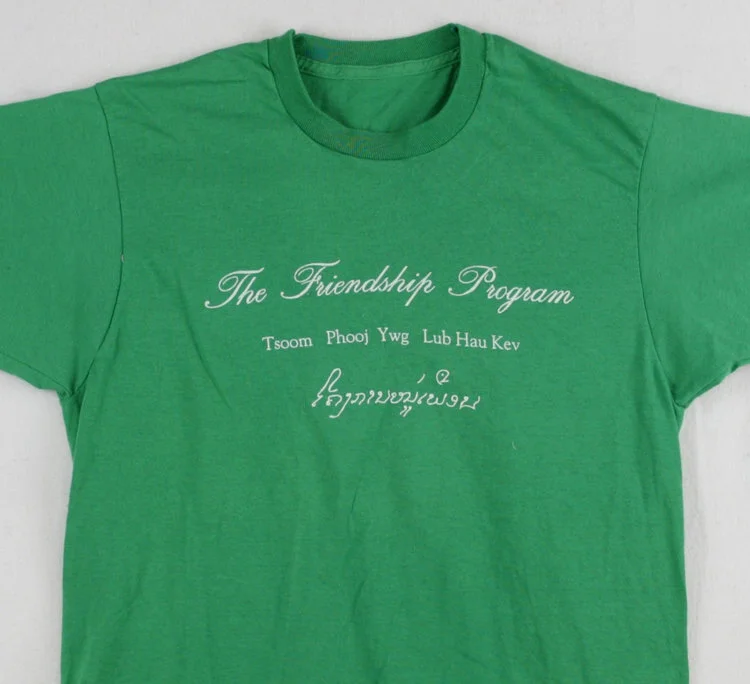Mai Xiong
Catalog Number: 2015.014.012
For many, this t-shirt is merely another walking advertisement, a boxy green t-shirt with “The Friendship Program” printed in thin white font running across the chest with Hmong and Lao translations below it. For others, however, the advertisement on this t-shirt brings back memories associated with Christ Episcopal Church and the Hmong in the La Crosse area.
In the summer of 1988, Christ Episcopal Church started The Friendship Program (TFP) to respond to “the rapidly growing Southeast Asian population in La Crosse.” TFP’s goal was to “encourage intercommunication in a friendly atmosphere to facilitate blending a foreign culture into American society.” In its first year, TFP offered three main programs: literacy skills in both Hmong and English; life skills, which focused primarily on sewing and cooking; and an early childhood program. In its latter years, it incorporated citizenship and tutoring programs.
TFP permeated the lives of various members in my family: my brother and sister attended Hmong literacy class; I attended the early childhood education program; and my father and mother participated in their English literacy and sewing classes.
I vaguely recall at the age of four going with my mother to a church across from the La Crosse Public Library. She would drop me off at what I thought then was “school,” and she would disappear for the next eight hours. At “school,” the highlight of my day was the mid-morning snack where my peers and I would get two graham crackers with a cup of milk.
In hindsight, I know now that the early childhood education program allowed my mother to participate in TFP’s sewing program, where she acquired many sewing skills, including quilting, that, as a child, I thought was natural to her. I still remember the hot summer afternoons where I anxiously awaited for my mother to complete her quilt so she could sew shorts for me.
For the ten years that TFP existed, many Hmong families in the La Crosse area at one point or another undoubtedly participated in it—the program’s existence was well known in the Hmong community, and many, if not all, non-Hmong TFP volunteers learned about the Hmong beyond the surface level material. In this vein, although TFP’s core values were fraught with culturally deficient views of the Hmong, the program fulfilled its bigger mission of building friendships across race, class, and citizenship.
This article was originally published in the La Crosse Tribune on July 11, 2015.
This object can be viewed in our online collections database by clicking here.

